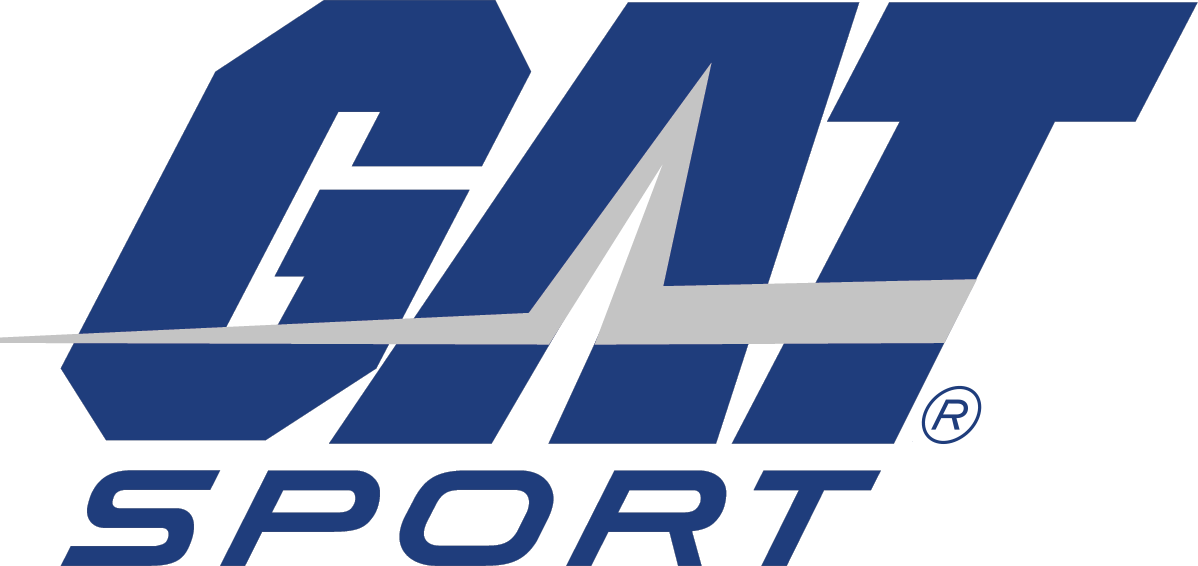October hits different. While everyone else obsesses over pumpkin spice lattes and Halloween costumes, smart athletes recognize this month as the ultimate pivot point that determines whether you finish the year like a champion or limp toward the holidays like everyone else.
As leaves transform and daylight shrinks, that familiar motivational fade creeps in. Summer's training momentum feels like ancient history, and the holiday excuse factory starts warming up. But here's what separates winners from quitters: October isn't your enemy; it's your opportunity. This transitional month can become your secret weapon for unprecedented gains when you understand the science and implement strategic solutions.
With battle-tested tools like Nitraflex Advanced, Pro Creatine, Deep Wood, and Flexx EAAs from GAT Sport, you can flip the script on seasonal slowdown. This isn't about maintaining; it's about dominating. Here's your blueprint for conquering the fall slump and entering winter stronger than ever.
The Problem: When Motivation Dies with the Leaves
October brings a triple threat that derails even dedicated athletes: mid-fall motivation collapse, crushing routine fatigue, and mass goal abandonment. The statistics paint a sobering picture that confirms what your gym's emptying parking lot already tells you.
By October, summer's training excitement has evaporated faster than morning dew. Research shows 65% of recreational athletes report reduced workout consistency during fall months, with motivation hitting annual lows just when you need it most (1). That energizing June mindset feels impossibly distant, replaced by a creeping apathy that makes skipping workouts feel justified.
Routine fatigue compounds the problem exponentially. Those ambitious January resolutions? They're gathering dust alongside your meal prep containers. Studies reveal that 50% of people abandon exercise programs within six months, with fall's environmental shifts accelerating this dropout rate like a metabolic avalanche (2).
The perfect storm forms when shorter days collide with back-to-routine stress and dropping temperatures. Your body interprets these signals as hibernation cues, triggering physiological changes that make consistency feel impossible. Without strategic intervention, you're virtually guaranteed to enter winter soft, unmotivated, and wondering where your gains went. But recognizing this predictable pattern is your first tactical advantage.

The Science: Why October Is Your Metabolic Crossroads
Understanding October's unique challenges requires diving into the fascinating intersection of seasonal biology, behavioral psychology, and performance science. This isn't just "feeling lazy"; it's measurable physiological shifts that demand intelligent counterstrategies.
Seasonal motivation patterns reveal the biological sabotage happening beneath your conscious awareness. Shorter days and cooler temperatures trigger neurochemical chaos: serotonin production drops while melatonin surges by up to 80%, creating a biochemical cocktail that murders motivation and energy (3). Your brain literally conspires against your training goals.
Systematic reviews confirm this isn't just perception. Physical activity levels demonstrably crater during autumn and winter, with moderate-to-vigorous exercise dropping 10-20% compared to summer peaks (4). This "fall drop-off" stems from circadian rhythm disruptions that make maintaining training consistency feel like pushing water uphill.
But here's where science becomes your ally. Habit formation research reveals that behaviors become automatic after approximately 66 days, though individual variation ranges from 18 to 254 days depending on complexity (5). October's 31 days represent a critical consolidation window; reinforce habits now or watch them dissolve into winter's inertia.
The neurological mechanics are compelling. Consistent actions strengthen neural pathways in your brain's basal ganglia, transforming effortful choices into automatic behaviors (6). October training isn't just about current gains; it's about programming your nervous system for sustained success.
Goal achievement psychology adds another crucial layer. Locke and Latham's landmark research demonstrates that specific, challenging goals boost performance by 15-25% through enhanced focus and persistence (7). Meanwhile, self-determination theory reveals why some people thrive while others quit: intrinsic motivation driven by autonomy, competence, and relatedness creates sustainable effort, while extrinsic pressures inevitably fade (8).
October becomes your laboratory for applying these principles. Reframe this month not as seasonal decline but as your proving ground for psychological resilience and physiological adaptation.
The Solution: October Intensity Protocols for Breakthrough Results
Transform October from obstacle to opportunity with these science-backed protocols designed for breakthrough performance. This isn't about surviving; it's about thriving when others are folding.
Phase 1: The Ruthless Audit
Begin by conducting a brutally honest assessment. Track your workouts, energy levels, and progress markers for one week. Identify specific fatigue points, motivation valleys, and performance gaps. Data beats denial every time.
The Morning Momentum Ritual
Combat reduced daylight with a non-negotiable 20-minute morning protocol that sets your metabolic tone. Start with Nitraflex Advanced; one scoop delivers nitric oxide precursors and precision caffeine that enhance focus and muscle pumps by 10-15% (9). This isn't just pre-workout; it's your morning transformation catalyst.
Follow immediately with exposure to bright light and movement. Even a brisk 10-minute walk elevates serotonin production, countering seasonal depression mechanisms (3). This simple sequence leverages habit formation's cue-response loop, making morning training automatic rather than agonizing (5).
Weekly Intensity Architecture
Structure your week around 3-4 high-intensity anchor sessions that maintain training stimulus despite motivational fluctuations. Implement progressive overload religiously: increase weights by 5-10% weekly to force adaptation (3). This objective progression prevents the subjective "I don't feel like it" from derailing results.
Support these sessions with Pro Creatine caps. Pop one serving (5g creatine) anytime for consistent muscle saturation, boosting power output and work capacity by 5-15% (4). The convenience factor eliminates excuses; no mixing, no timing stress, just results.
During longer sessions, sip Flexx EAAs to sustain intensity and reduce muscle protein breakdown by 20% (10). This real-time recovery support allows you to push harder when motivation alone won't carry you through.
The Motivation Maintenance System
Address routine fatigue through calculated variety. Alternate heavy lifts with HIIT protocols, yoga flows, and outdoor challenges. This variation prevents both physical and psychological stagnation while maintaining progressive stimulus.
Deep Wood becomes your hormonal insurance policy. Daily supplementation optimizes testosterone levels and mood regulation, providing the biological foundation for sustained drive (11). Pair this with upgraded goal setting: establish SMART objectives like "increase deadlift by 20 pounds" or "complete 20 workouts this month." Research confirms such specific targets increase achievement probability by 15-25% (7).
Document everything in a training journal. This simple practice reinforces neural pathways and creates tangible evidence of progress when motivation wavers (5).
Recovery Revolution
Prioritize sleep hygiene to counter melatonin disruption. Target 7-9 hours in a cool, dark room (3). Post-workout, leverage Flexx EAAs for accelerated repair and adaptation. Weekly progress reviews foster the competence component of self-determination theory, creating intrinsic motivation that outlasts seasonal challenges (8).
By mid-October, these protocols transform from conscious effort to automatic execution. By month's end, you're not just maintaining; you're surging toward year-end peaks while others are already making excuses for January.
References
- Burke, Louise M., et al. "Supplements and Sports Foods." Clinical Sports Nutrition, edited by Louise M. Burke and Vicki Deakin, 5th ed., McGraw-Hill Education, 2015, pp. 493-565.
- Dishman, Rod K., and Janet Buckworth. "Increasing Physical Activity: A Quantitative Synthesis." Medicine & Science in Sports & Exercise, vol. 28, no. 6, 1996, pp. 706-719, doi:10.1097/00005768-199606000-00010.
- Rosenthal, Norman E. "Winter Blues: Everything You Need to Know to Beat Seasonal Affective Disorder." Guilford Press, 2012.
- Tucker, Patricia, and Jason Gilliland. "The Effect of Season and Weather on Physical Activity: A Systematic Review." Public Health, vol. 121, no. 12, 2007, pp. 909-922, doi: 10.1016/j.puhe.2007.04.009.
- Lally, Phillippa, et al. "How Are Habits Formed: Modelling Habit Formation in the Real World." European Journal of Social Psychology, vol. 40, no. 6, 2010, pp. 998-1009, doi:10.1002/ejsp.674.
- Graybiel, Ann M. "Habits, Rituals, and the Evaluative Brain." Annual Review of Neuroscience, vol. 31, 2008, pp. 359-387, doi: 10.1146/annurev.neuro.29.051605.112851.
- Locke, Edwin A., and Gary P. Latham. "Building a Practically Useful Theory of Goal Setting and Task Motivation: A 35-Year Odyssey." American Psychologist, vol. 57, no. 9, 2002, pp. 705-717, doi:10.1037/0003-066X.57.9.705.
- Deci, Edward L., and Richard M. Ryan. "The 'What' and 'Why' of Goal Pursuits: Human Needs and the Self-Determination of Behavior." Psychological Inquiry, vol. 11, no. 4, 2000, pp. 227-268, doi:10.1207/S15327965PLI1104_01.
- Jäger, Ralf, et al. "Analysis of the Efficacy, Safety, and Regulatory Status of Novel Forms of Creatine." Amino Acids, vol. 40, no. 5, 2011, pp. 1369-1383, doi:10.1007/s00726-011-0874-6.
- Pasiakos, Stefan M., et al. "Effects of Essential Amino Acid Supplementation on Muscle Protein Synthesis and Recovery." American Journal of Clinical Nutrition, vol. 99, no. 5, 2014, pp. 1150-1159, doi:10.3945/ajcn.113.075150.


